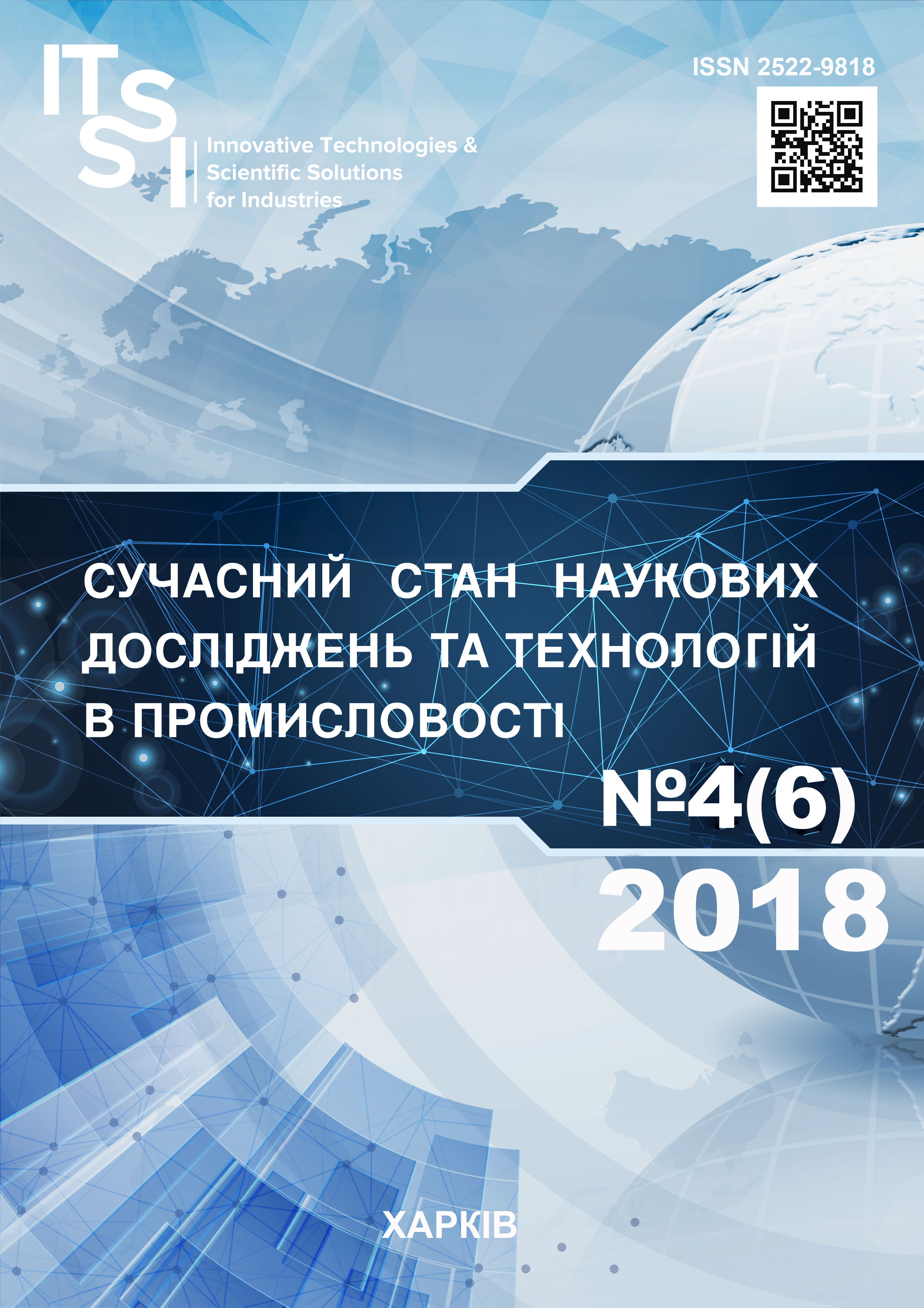ЯДЕРНА НЕЧІТКА КЛАСТЕРИЗАЦІЯ ПОТОКІВ ДАНИХ НА ОСНОВІ АНСАМБЛЮ НЕЙРОННИХ МЕРЕЖ
DOI:
https://doi.org/10.30837/2522-9818.2018.6.042Ключові слова:
кластерування, метод Х-середніх, самоорганізована мапа Кохонена, ансамбль нейронних мереж, самонавчанняАнотація
Предметом дослідження в статті є кластерування даних на основі ансамблю нейронних мереж. Мета роботи - створення нового підходу в задачах кластерування потоків даних, коли інформація надходить в online режимі спостереження за спостереженням. У статті вирішуються наступні завдання: формування моделі ансамблів нейронних мереж для кластерування даних, розробка методів кластерування даних при роботі з даними великих розмірностей, розробка методів онлайн кластерування даних з використанням ансамблів нейронних мереж, які працюють у паралельному режимі. Отримані наступні результати: сформульовано принципи роботи ансамблів нейронних мереж Т. Кохонена, і визначені практичні вимоги для роботи з даними великої розмірності. Показані можливі підходи для вирішення перерахованих завдань. Досліджено принцип роботи ансамблю паралельно налаштованих кластерувальних мереж Т. Кохонена. Для навчання шарів ансамблю нейронних мереж використовувалися процедури, які працюють за принципом WTA і WTM. Були використані радіально-базисні функції для підвищення розмірностей вхідного простору. Розроблено математичну модель для вирішення задачі кластерування даних в online режимі. Розроблено математичну модель для визначення якості кластерування з використанням індексу Девіса-Булдена, який був переформульований для online режиму. Висновки: В роботі запропоновано новий підхід до завдання кластерування потоків даних, коли інформація надходить в online режимі спостереження за спостереженням за умов, що кількість і форма кластерів заздалегідь невідома. Основна ідея підходу базується на ансамблі нейронних мереж, який складається з самоорганізованих мап Кохонена. Всі члени ансамблю обробляють інформацію, яка послідовно подається в систему в паралельному режимі. Експериментальні результати підтвердили той факт, що система може бути використана для вирішення широкого кола завдань Data Stream Mining.Посилання
Gan, G., Ma, Ch., Wu, J. (2007), Data Clustering: Theory, Algorithms and Applications, Philadelphia : SIAM.
Xu, R., Wunsch, D. C. (2009), Clustering, Hoboken, NJ : John Wiley & Sons, Inc., IEEE Press Series on Computational Intelligence.
Aggarwal, C. C., Reddy, C. K. (2014), Data Clustering, Algorithms and Application, Boca Raton : CRC Press.
Pelleg, D., Moor, A. (2000), "X-means: extending K-means with efficient estimation of the number of clusters", In: Proc. 17th Int. Conf. on Machine Learning, Morgan Kaufmann, San Francisco, P.727–730.
Ishioka, T. (2005), "An expansion of X-means for automatically determining the optimal number of clusters", In: Proc. 4th IASTED Int. Conf. Computational Intelligence, Calgary, Alberta, P. 91–96.
Rutkowski, L. (2008), Computational Intelligence. Methods and Techniques, Berlin-Heidelberg: Springer-Verlag.
Mumford, C. and Jain, L. (2009), Computational Intelligence. Collaboration, Fuzzy and Emergence, Berlin : Springer-Vergal.
Kruse, R., Borgelt, C., Klawonn, F., Moewes, C., Steinbrecher, M. and Held, P. (2013), Computational Intelligence. A Methodological Introduction, Berlin : Springer.
Du, K. L. and Swamy, M. N. S. (2014), Neural Networks and Statistical Learning, London : Springer-Verlag.
Kohonen, T. (1995), Self-Organizing Maps, Berlin : Springer-Verlag.
Strehl, A., Ghosh, J. (2002), "Cluster ensembles – A knowledge reuse framework for combining multiple partitions", Journal of Machine Learning Research, P. 583–617.
Topchy, A., Jain, A. K., Punch, W. (2005), "Clustering ensembles: models of consensus and weak partitions", IEEE Transactions on Pattern Analysis and Machine Intelligence, No. 27, P. 1866–1881.
Alizadeh, H., Minaei-Bidgoli, B., Parvin, H. (2013), "To improve the quality of cluster ensembles by selecting a subset of base clusters", Journal of Experimental & Theoretical Artificial Intelligence, No. 26, P. 127–150.
Charkhabi M., Dhot T., Mojarad S. A. (2014), "Cluster ensembles, majority vote, voter eligibility and privileged voters", Int. Journal of Machine Learning and Computing, No. 4, P. 275–278.
Bodyanskiy, Ye. V., Deineko, A. A., Zhernova, P. Ye., Riepin, V. O. (2017), "Adaptive modification of X-means method based on the ensemble of the T. Kohonen’s clustering neural networks", Materials of the VI Int. Sci. Conf. "Information Managements Systems and Technologies", Odessa, P. 202–204.
Bezdek, J. C., Keller, J., Krishnapuram, R., Pal N. (1999), Fuzzy Models and Algorithms for Pattern Recognition and Image Processing, The Handbook of Fuzzy Sets, Kluwer, Dordrecht, Netherlands : Springer, Vol. 4.
Cover, T. M. (1956), "Geometrical and statistical properties of systems of linear inequalities with applications in pattern recognition", IEEE Trans. on Electronic Computers, No. 14, P. 326–334.
Girolami, M. (2002), "Mercer kernel-based clustering in feature space", IEEE Trans. on Neural Networks, Vol. 13, No. 3, P. 780–784.
MacDonald, D., Fyfe, C. (2002), "Clustering in data space and feature space", ESANN'2002 Proc. European Symp. on Artificial Neural Networks, Bruges (Belgium), P. 137–142.
Camastra, F., Verri, A. (2005), "A novel kernel method for clustering," IEEE Trans. on Pattern Analysis and Machine Intelligence, No. 5, P. 801–805.
Bodyanskiy, Ye. V., Deineko, A. A., Kutsenko, Y. V., "On-line kernel clustering based on the general regression neural network and T. Kohonen’s self-organizing map", Automatic Control and Computer Sciences, No. 51 (1), P. 55–62.
Davies, D. L., Bouldin, D. W. (1979), "A Cluster Separation Measure", IEEE Transactions on Pattern Analysis and Machine Intelligence, No. 4, P. 224–227.
Murphy, P. M., Aha, D. (1994), UCI Repository of machine learning databases, available at : http://www.ics.uci.edu/mlearn/MLRepository.html, Department of Information and Computer Science, CA : University of California.
##submission.downloads##
Опубліковано
Як цитувати
Номер
Розділ
Ліцензія
Авторське право (c) 2018 Поліна Євгеніївна Жернова, Євгеній Володимирович Бодянський

Ця робота ліцензується відповідно до Creative Commons Attribution-NonCommercial-ShareAlike 4.0 International License.
Наше видання використовує положення про авторські права Creative Commons для журналів відкритого доступу.
Автори, які публікуються у цьому журналі, погоджуються з наступними умовами:
Автори залишають за собою право на авторство своєї роботи та передають журналу право першої публікації цієї роботи на умовах ліцензії Creative Commons Attribution-NonCommercial-ShareAlike 4.0 International License (CC BY-NC-SA 4.0), котра дозволяє іншим особам вільно розповсюджувати опубліковану роботу з обов'язковим посиланням на авторів оригінальної роботи та першу публікацію роботи у цьому журналі.
Автори мають право укладати самостійні додаткові угоди щодо не комерційного та не ексклюзивного розповсюдження роботи у тому вигляді, в якому вона була опублікована цим журналом (наприклад, розміщувати роботу в електронному сховищі установи або публікувати у складі монографії), за умови збереження посилання на першу публікацію роботи у цьому журналі.
Політика журналу дозволяє і заохочує розміщення авторами в мережі Інтернет (наприклад, у сховищах установ або на особистих веб-сайтах) рукопису опублікованої роботи, оскільки це сприяє виникненню продуктивної наукової дискусії та позитивно позначається на оперативності та динаміці цитування опублікованої роботи.














